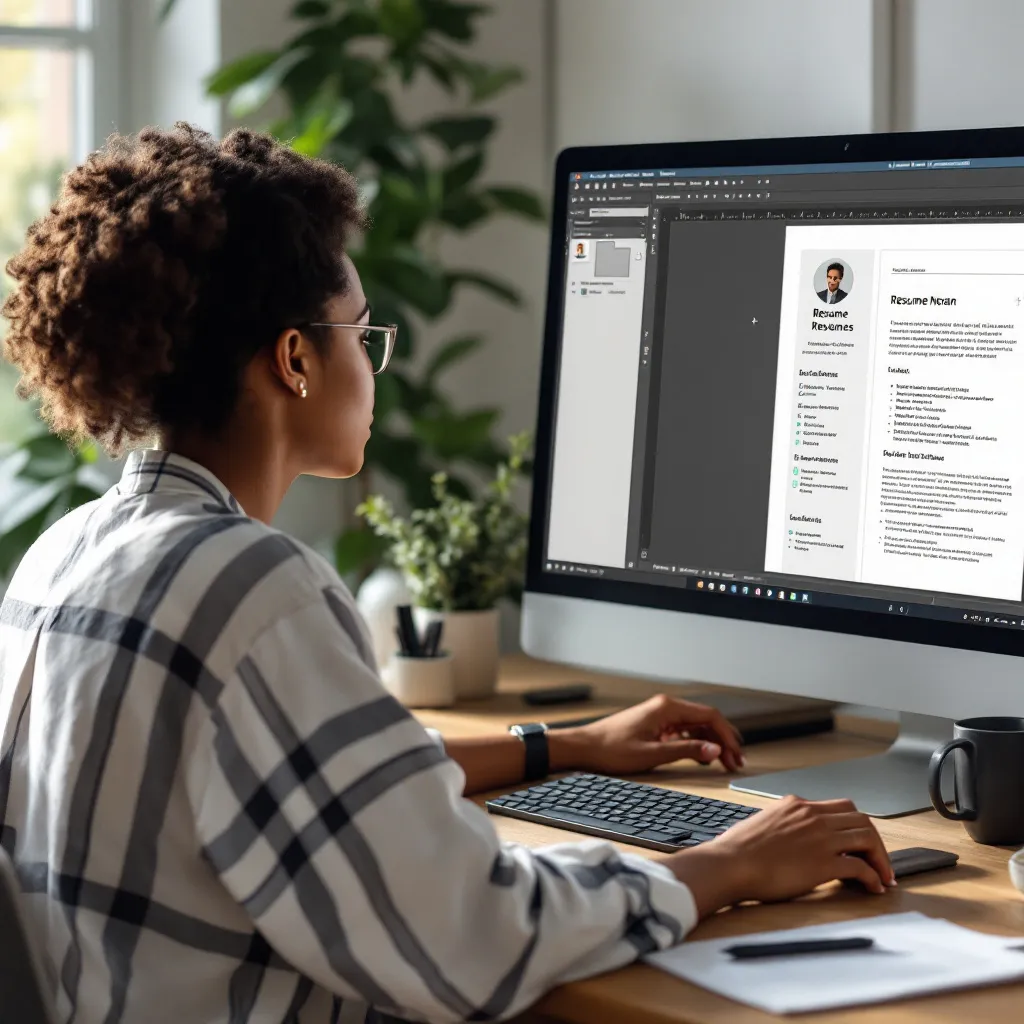In today’s competitive job market, a clean, well-organized resume can make all the difference in landing your dream job. Simple resume formats aren’t just easier to create—they’re often more effective at showcasing your qualifications and passing through applicant tracking systems (ATS).
Understanding the Value of Simple Resume Formats
The appeal of simple resume formats lies in their clarity and functionality. According to research, hiring managers spend just 6-7 seconds scanning each resume initially, making readability crucial. Simple resume templates offer several advantages:
- ATS Compatibility: Over 75% of resumes are filtered out by applicant tracking systems due to complex formatting issues. Clean layouts with standard headings ensure your resume gets past these digital gatekeepers.
- Improved Readability: Recruiters appreciate straightforward organization that allows them to quickly find key information.
- Professional Appearance: A clean, minimalist design conveys professionalism and attention to detail.
- Easy Customization: Simple templates can be quickly tailored for different job applications, saving you valuable time.
The reverse-chronological format (listing your most recent experience first) is particularly favored in US and UK markets, as it immediately demonstrates your career progression to potential employers.
Essential Elements of an Effective Simple Resume
Core Sections to Include
A well-structured, simple resume should contain these fundamental elements:
-
Header: Include your name, phone number, email, and LinkedIn URL (optional). In US/UK markets, photos are generally not included unless you’re in a creative field.
-
Professional Summary: Create a powerful 2-3 line summary highlighting your most impressive achievements. For example: “Marketing manager with 4+ years of experience driving 20% year-over-year growth through strategic digital campaigns.”
-
Work Experience: Use bullet points that emphasize achievements rather than just listing job duties. Start each bullet with action verbs and include metrics where possible:
- “Increased departmental efficiency by 30% through implementation of new workflow procedures”
- “Managed a $500K budget while reducing costs by 15%”
-
Skills: List 6-8 relevant hard and soft skills that align with the job description, such as “Project Management,” “Financial Analysis,” or “Team Leadership.”
-
Education: Include your degree, institution, and graduation year. Add certifications if relevant to the position.
Clean Formatting Principles
For optimal readability in a Word document:
- Use professional fonts like Arial, Calibri, or Garamond (10-12 point size)
- Maintain consistent margins (0.5-1 inch)
- Implement strategic white space with 1.15 line spacing
- Create visual hierarchy with consistent heading styles
- Use bold text sparingly to highlight key information
- Save as PDF to preserve formatting when submitting
Step-by-Step: Creating a Simple Resume in Word
Microsoft Word offers several built-in resume templates that provide an excellent foundation for a professional document:
- Open Word and click File > New
- In the search box, type “resume” or “CV”
- Browse the templates and select a minimalist design like “Simple” or “Professional”
- Click to download the template and begin customization
Customizing Word Templates
Once you’ve selected a template:
- Replace placeholder text with your personal information
- Adjust section headings to match your needs (add or remove sections)
- Modify colors and fonts if desired (stick to professional options)
- Remove any design elements that might confuse ATS systems, such as text boxes or complex graphics
Troubleshooting Common Word Formatting Issues
When working with Word resume templates, you might encounter these common problems:
- Alignment issues: Use tab stops instead of multiple spaces for clean alignment
- Unwanted page breaks: Use the “Keep with next” paragraph setting to keep related content together
- Inconsistent spacing: Select all text and apply consistent paragraph spacing
- Table formatting problems: If using tables for layout, ensure borders are hidden for a clean look
Making a Simple Resume Stand Out
A simple format doesn’t mean a boring resume. Here’s how to make your basic resume impressive:
- Quantify achievements whenever possible (e.g., “Reduced customer complaints by 40%”)
- Mirror job description keywords to improve ATS compatibility
- Use industry-specific terminology that demonstrates your expertise
- Include relevant volunteer work or projects if they showcase valuable skills
- Tailor your content for each application rather than using a one-size-fits-all approach
For entry-level positions, focus on transferable skills and academic achievements. For more experienced professionals, emphasize career progression and measurable impact in your field.
Simple Resume Format Examples and Templates
Several effective simple resume formats work well in Microsoft Word:
-
Basic/Minimalist: A single-column layout with clear section dividers and no graphics is ideal for traditional industries and ATS compatibility.
-
Clean Professional: A two-column layout with contact information in a sidebar offers a bit more visual interest while maintaining simplicity.
-
Academic Focus: For recent graduates, templates that emphasize education credentials while maintaining clean formatting are particularly effective.
For roles in finance, accounting, or technology, the “Swiss” or “Timeless” templates in Word provide an excellent balance of professionalism and readability. Students might benefit from free student resume templates that highlight educational achievements and relevant coursework.
Conclusion
Creating a simple, effective resume in Word doesn’t require advanced design skills—just attention to content quality and basic formatting principles. By focusing on clear organization, achievement-focused content, and ATS compatibility, you’ll create a resume that gets noticed for the right reasons.
Remember that your resume is often your first impression with potential employers. A clean, professional document demonstrates your attention to detail and communication skills before you even get to the interview.
Whether you’re crafting an American resume format or preparing a CV for the UK market, simplicity and clarity will help your qualifications shine. If you’re struggling with creating an effective resume, consider affordable resume writing services or explore resume examples in your field for inspiration.
For a truly streamlined experience, ResuFit offers AI-powered resume optimization that makes the entire process even easier, helping you create tailored, ATS-friendly documents in minutes rather than hours.




















